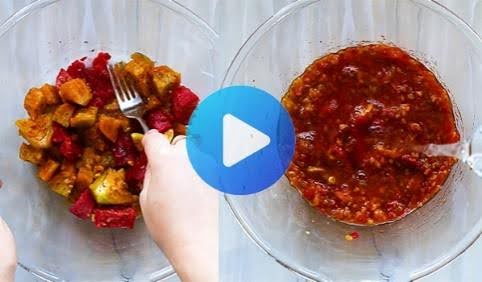Losing weight can feel like a big puzzle, especially for us women. Our bodies have unique needs and sometimes react differently to diet changes. You might have heard about using smoothies to help with weight loss. Maybe you’ve wondered if they actually work or if it’s just another trend. Well, I’m here to tell you that when done right, smoothies can be a fantastic tool, and there’s some real science to back it up.
I’ve worked with many women looking to shed pounds and improve their health. Smoothies often come up in our talks. They are quick, easy, and can be packed with goodness. But it’s not just about throwing anything into a blender. Understanding why they work can help you make smoothies that truly support your goals. Let’s dive into the science behind it.
Why Smoothies Can Be Great for Weight Loss
Think about what makes a meal or snack helpful for losing weight. You want something that fills you up without too many calories. You need good nutrients to keep your body working well. And it should help you manage cravings. Smoothies can check all these boxes.
- Packed with Nutrients: Smoothies are a super easy way to get lots of vitamins and minerals. You can blend fruits, vegetables, protein sources, and healthy fats all together. This means you get a wide range of nutrients in one glass. Getting enough nutrients is important when you’re cutting calories. It helps keep your energy up and your body healthy.
- Fiber is Your Friend: Fruits, vegetables, seeds like chia or flax, and oats are full of fiber. Fiber does amazing things for weight loss. First, it helps you feel full. Fiber absorbs water and expands in your stomach, telling your brain you’ve had enough. This feeling of fullness, called satiety, can last for a while, helping you eat less overall. Second, fiber is great for your digestion. It keeps things moving smoothly and feeds the good bacteria in your gut. A healthy gut is being linked more and more to easier weight management.
- Protein Power: Protein is another key player in weight loss. Like fiber, it helps you feel full and satisfied. Your body also uses more energy to digest protein compared to fats or carbs. This is called the thermic effect of food. Plus, protein helps protect your muscle mass when you’re losing weight. Muscle burns more calories than fat, even when you’re resting. So keeping muscle is important for your metabolism. Adding protein powder, Greek yogurt, or even tofu to your smoothie boosts its filling power.
- Staying Hydrated: Smoothies have a high water content, especially if you use water, unsweetened almond milk, or coconut water as your base. Fruits and vegetables also contain a lot of water. Staying hydrated is important for overall health and can also help with weight loss. Sometimes we mistake thirst for hunger. Drinking enough fluids can help manage appetite.
- Controlling Calories: Because you control exactly what goes into your smoothie, you can manage the calorie count. You can make a lower-calorie smoothie for a snack or a more substantial one to replace a meal like breakfast. This control makes it easier to stick to your daily calorie goals. Compared to grabbing a pastry or a sugary coffee drink, a well-made smoothie is often a much healthier, lower-calorie choice.
The Science Behind Feeling Full and Burning Fat
Okay, let’s get a little more technical, but I’ll keep it simple. How do smoothies actually trigger these weight loss benefits in our bodies?
- Talking to Your Hunger Hormones: Your body uses hormones to control hunger and fullness. Ghrelin is the “hunger hormone” – it tells your brain you need to eat. Leptin is a “fullness hormone” – it signals when you’ve had enough. Ingredients rich in fiber and protein, like those in a good smoothie, are great at managing these hormones. They help lower ghrelin levels and increase hormones that signal fullness, like PYY and GLP-1. This means you feel less hungry and more satisfied after your smoothie.
- Keeping Blood Sugar Steady: Have you ever eaten something sugary and felt a burst of energy followed by a crash? That crash often comes with cravings for more sugar or carbs. This happens because simple sugars cause a rapid spike in your blood sugar, followed by a sharp drop. Smoothies made with the right ingredients can help avoid this rollercoaster. Using low-sugar fruits (like berries), vegetables, protein, and healthy fats creates a blend that digests more slowly. This leads to a gentler rise and fall in blood sugar, providing sustained energy and fewer cravings. This is especially important for women, as hormonal changes can sometimes make us more sensitive to blood sugar swings.
- Giving Your Metabolism a Nudge: While no food magically melts fat away, some smoothie ingredients can slightly boost your metabolism. Protein, as we mentioned, requires more energy to digest (thermic effect). Some studies also suggest that ingredients like green tea (which can be used as a base) or a pinch of cinnamon might have small, positive effects on metabolism and fat burning. It’s not a huge effect, but every little bit helps.
- Happy Gut, Healthy Weight: The trillions of bacteria living in your gut, known as the gut microbiome, play a surprisingly big role in your health, including your weight. An imbalance in gut bacteria has been linked to weight gain and difficulty losing weight. Smoothies can be fantastic for gut health. Fiber-rich ingredients feed the good bacteria. If you add yogurt or kefir with live cultures, you’re also getting probiotics (the good bacteria themselves). A healthier gut microbiome can improve digestion, reduce inflammation, and potentially make weight management easier.
Smoothies and Specific Needs for Women
Our bodies have unique needs, especially when it comes to hormones, bone health, and iron levels. Smoothies can be tailored to support these areas.
- Hormone Harmony: Fluctuating hormones can impact weight, mood, and cravings. Certain smoothie ingredients might help support hormonal balance. For example, adding ground flax seeds provides lignans, which are plant compounds that can have a balancing effect on estrogen levels. Including healthy fats from avocado or seeds is also important, as fats are needed to produce hormones.
- Building Strong Bones: Women are at higher risk for osteoporosis later in life. Getting enough calcium and vitamin D is crucial for bone health. You can boost your smoothie’s bone-building power by including calcium-rich ingredients like Greek yogurt, fortified plant milks (check the label), chia seeds, and leafy greens like kale or spinach (which also provide vitamin K, another bone-friendly nutrient).
- Boosting Iron: Iron deficiency is more common in women, especially during childbearing years. It can lead to fatigue and make it harder to exercise or stay active. Spinach is a classic smoothie addition that provides iron. Other good sources include pumpkin seeds and sesame seeds (tahini). Pairing iron-rich foods with vitamin C (like berries or citrus) helps your body absorb the iron better.
- Tackling Sweet Cravings: Many of us struggle with cravings for sweets, especially at certain times of the month. A naturally sweet smoothie made with fruit can satisfy that craving in a much healthier way than reaching for candy or cake. The fiber and protein also help prevent the blood sugar crash that often follows sugary treats.
How to Build Your Best Weight Loss Smoothie
Making a truly effective weight loss smoothie is about choosing the right combination of ingredients. Think of it like building with blocks:
- Choose Your Liquid Base (about 1 cup):
- Water (zero calories)
- Unsweetened almond milk, cashew milk, or soy milk (check labels for low sugar/calories)
- Unsweetened coconut water (provides electrolytes, but has some natural sugar)
- Chilled green tea (unsweetened, potential metabolism boost)
- Avoid: Fruit juices (too much sugar), sweetened milks, whole milk (higher in calories/fat unless planned).
- Pick Your Protein (aim for 15-25 grams):
- Protein powder (whey, casein, egg white, or plant-based like pea, soy, hemp)
- Plain Greek yogurt (0% or 2% fat)
- Cottage cheese (low fat)
- Silken tofu
- Avoid: Flavored yogurts (often high in sugar), protein powders with lots of added sugar.
- Add Fiber-Rich Fruits (1/2 to 1 cup):
- Berries (strawberries, blueberries, raspberries, blackberries – lower in sugar, high in antioxidants)
- Apple or pear (leave the skin on for extra fiber)
- Peach or plum
- Small banana (adds creaminess, but higher in sugar, use sparingly)
- Kiwi
- Focus on lower-sugar options most of the time.
- Avoid: Using too much high-sugar fruit (like mangoes, pineapple, grapes) in one go, canned fruit in syrup.
- Load Up on Veggies (1-2 handfuls):
- Spinach (mild flavor, disappears easily)
- Kale (stronger flavor, very nutritious)
- Cucumber (hydrating, mild flavor)
- Zucchini (mild, adds creaminess when frozen)
- Frozen cauliflower florets (adds thickness and creaminess without much taste)
- Carrots
- Beets (use sparingly, strong flavor and color)
- Don’t be afraid to experiment. Veggies add nutrients and fiber without many calories.
- Include Healthy Fats (1 serving):
- 1/4 avocado (adds amazing creaminess and healthy fats)
- 1 tablespoon nut butter (almond, peanut, cashew – choose natural varieties without added sugar/oil)
- 1 tablespoon seeds (chia, flax, hemp, pumpkin, sunflower)
- Fats help with satiety and nutrient absorption but are calorie-dense, so measure carefully.
- Boost Fiber and Thickness (Optional):
- 1-2 tablespoons rolled oats
- 1 tablespoon psyllium husk (start small, needs plenty of liquid)
- Chia seeds or flax seeds (they also count as healthy fats)
- Add Flavor (Optional, Sugar-Free):
- Cinnamon, nutmeg, ginger
- Unsweetened cocoa powder
- Vanilla or almond extract
- Mint leaves
- A squeeze of lemon or lime juice
- Avoid: Honey, maple syrup, agave nectar, sugar, chocolate syrup.
Blend everything until smooth. Add more liquid if it’s too thick, or a few ice cubes if you like it colder.
Smart Smoothie Strategies
Knowing how to build a good smoothie is one thing; using them effectively is another.
You Might Be Interested In: Learning more about The Complete Smoothie Detox & Weight Loss Program
- Meal or Snack? A smoothie can replace a meal (like breakfast or lunch) if it’s balanced and substantial enough (around 300-450 calories with good protein, fiber, and fat). A smaller, lower-calorie smoothie (150-250 calories) works well as a snack between meals or before/after a workout. Don’t just add a smoothie to your regular meals without adjusting elsewhere, or you’ll add extra calories.
- Timing Matters: A smoothie makes a quick and easily digestible breakfast. A protein-rich smoothie after a workout can help with muscle recovery. A smaller smoothie can be a good pre-workout fuel source about an hour before exercise.
- Watch Your Portions: It’s easy to overdo it. Measure your ingredients, especially higher-calorie ones like nut butter, seeds, avocado, and higher-sugar fruits. Use standard measuring cups and spoons.
- Listen to Your Body: Smoothies are great, but they aren’t magic. Pay attention to how you feel. If you’re still hungry shortly after a meal-replacement smoothie, maybe it needed more protein or fiber, or perhaps you just prefer chewing your food sometimes. That’s okay too.
- Mix It Up: Don’t drink the exact same smoothie every single day. Vary your fruits, veggies, and protein sources to get a wider range of nutrients and prevent boredom.
Things to Watch Out For
While smoothies are beneficial, there are a few potential pitfalls to avoid.
- The Sugar Trap: The biggest mistake is loading up on fruit, fruit juice, and added sweeteners. This can turn a healthy smoothie into a sugar bomb, spiking your blood sugar and adding lots of calories. Stick to recommended fruit portions, use water or unsweetened milk as a base, and rely on spices or extracts for flavor instead of sugar.
- Calorie Overload: Healthy fats like avocado, nuts, and seeds are great, but they are high in calories. Be mindful of portion sizes. It’s easy for a smoothie to creep up to 500-600 calories or more if you’re not careful, which might be more than you need, especially for a snack.
- Missing the Chew: Some people find that drinking their calories isn’t as satisfying as chewing solid food. If you find yourself hungry soon after a smoothie, try making it thicker (use less liquid, add frozen fruit/veg or oats) and eat it with a spoon. Or, alternate smoothies with solid meals.
- Too Much Fiber Too Fast: If you’re not used to a high-fiber diet, suddenly drinking large, fiber-packed smoothies might cause some digestive upset like bloating or gas. Start with smaller amounts of high-fiber ingredients (like chia seeds or psyllium) and gradually increase as your body adjusts. Make sure you’re drinking enough water throughout the day too.
Some Smoothie Ideas to Get You Started
Here are a few balanced smoothie recipes designed with weight loss in mind:
- Green Goddess Detox:
- 1 cup water or unsweetened almond milk
- 1 scoop vanilla protein powder
- 1 large handful spinach
- 1/2 cucumber, chopped
- 1/4 avocado
- 1 tbsp chia seeds
- Juice of 1/4 lemon
- Few mint leaves (optional)
- Berry Protein Blast:
- 1 cup unsweetened almond milk
- 1/2 cup plain Greek yogurt
- 1 scoop berry or vanilla protein powder
- 1 cup mixed berries (frozen works well)
- 1 tbsp ground flax seeds
- Chocolate Avocado Dream:
- 1 cup water or unsweetened cashew milk
- 1 scoop chocolate protein powder
- 1/4 avocado
- 1 tbsp unsweetened cocoa powder
- 1 handful spinach (you won’t taste it)
- Dash of cinnamon
- Ice cubes (optional, for thickness)
- Post-Workout Recovery:
- 1 cup water or coconut water (unsweetened)
- 1 scoop protein powder (whey or fast-digesting)
- 1/2 banana (for quick carbs)
- 1/2 cup frozen cauliflower (adds thickness)
- 1 tbsp almond butter
Feel free to adjust these based on your preferences and what you have on hand, keeping the basic principles of balance in mind.
Smoothies are Part of a Bigger Picture
It’s really important to remember that smoothies are a tool, not a complete solution. You can’t rely solely on smoothies and ignore other aspects of a healthy lifestyle. Sustainable weight loss comes from a combination of factors:
- Eating Whole Foods: Focus on lean proteins, lots of vegetables, whole grains, and healthy fats in your other meals.
- Regular Exercise: Aim for a mix of cardio and strength training.
- Getting Enough Sleep: Poor sleep can mess with hunger hormones and increase cravings.
- Managing Stress: Chronic stress can lead to weight gain, especially around the belly. Find healthy ways to cope with stress.
- Staying Consistent: Healthy habits built over time lead to lasting results.
Think of smoothies as one helpful piece of your overall weight loss and wellness plan. They can make getting good nutrition easier and more convenient, helping you stay on track towards your goals.
Related YouTube Video
For a visual guide and more ideas, you might find this video helpful:
Final Thoughts
So, can smoothies help women lose weight? Based on the science of nutrition and how our bodies work, the answer is yes – when they are made thoughtfully. By focusing on protein, fiber, healthy fats, and nutrient-dense fruits and vegetables, while keeping sugar and overall calories in check, smoothies can be a powerful ally. They can help manage hunger, keep blood sugar stable, support gut health, and provide essential nutrients often needed during weight loss.
Remember to see smoothies as part of your balanced diet and healthy lifestyle, not a quick fix. Experiment with ingredients, listen to your body, and enjoy the process of nourishing yourself well.







